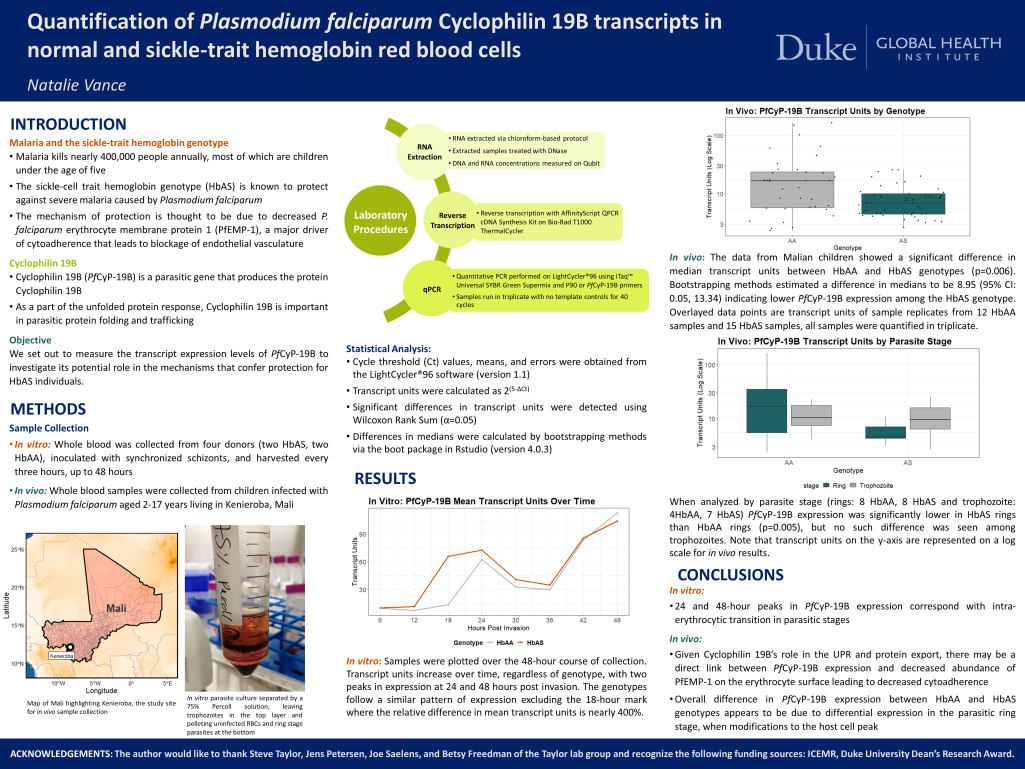Quantification of Plasmodium falciparum Cyclophilin 19B transcripts in normal and sickle-trait hemoglobin red blood cells

Project member(s):
-
Natalie Vance (Pictured)
Jens Petersen
Joseph Saelens
Betsy Freedman
Steve Taylor
Faculty mentor:
- Feedback? Contact the team
Quantification of Plasmodium falciparum Cyclophilin 19B transcripts in normal and sickle-trait hemoglobin red blood cells
Project overview
The Plasmodium falciparum parasite is responsible for a vast majority of the world's malaria burden and can cause severe malaria that often leads to death. Interestingly, individuals who possess the sickle-cell trait hemoglobin genotype are protected from severe malaria caused by P. falciparum. The biological mechanisms that confer this protection are not completely understood. Using both in vitro time series samples and in vivo clinical samples from Malian children, we used quantitative PCR methods to measure the expression levels of the parasitic gene Cyclophilin 19B to study its potential association with the protective phenotype conferred by the sickle-trait hemoglobin genotype.
Last updated on June 26, 2023
